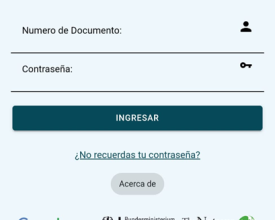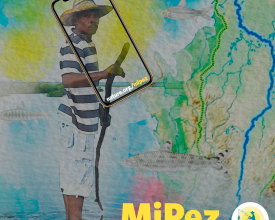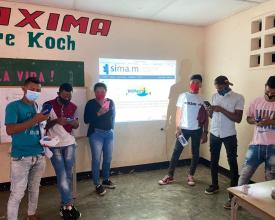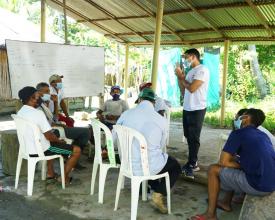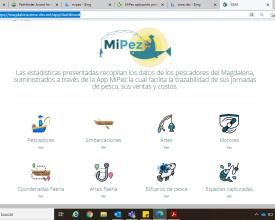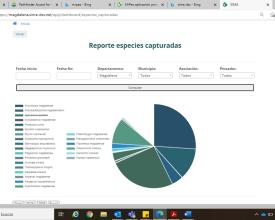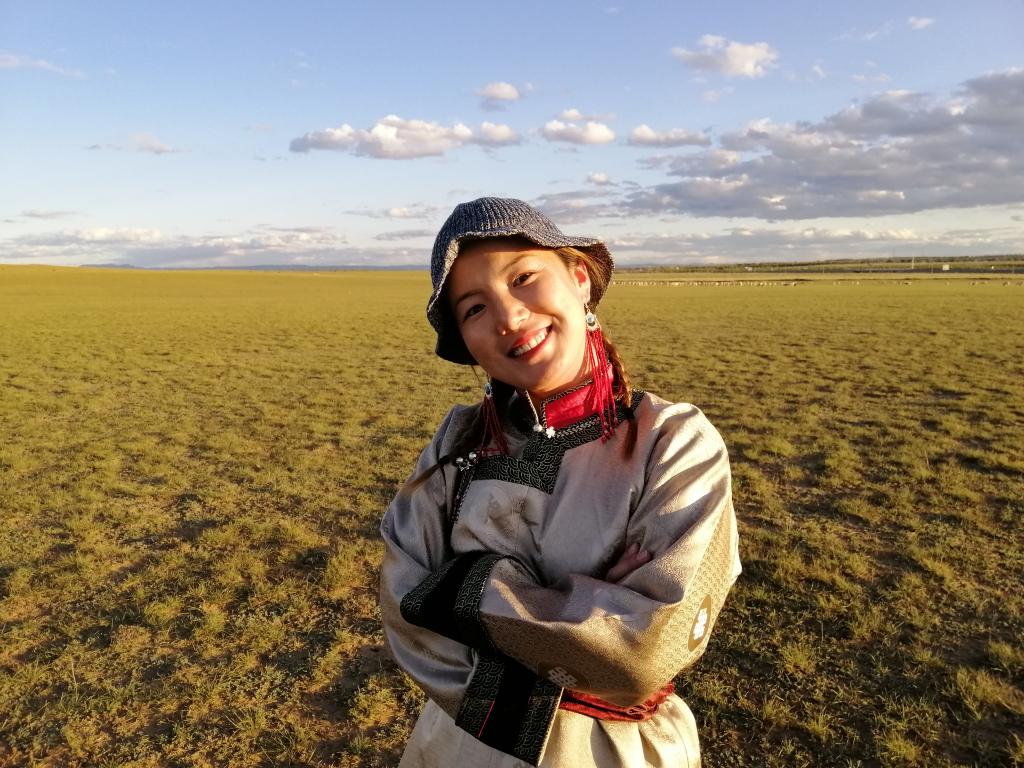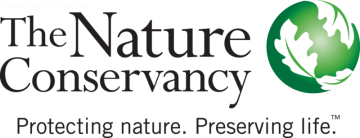
Mipez: mobile application for fishermen
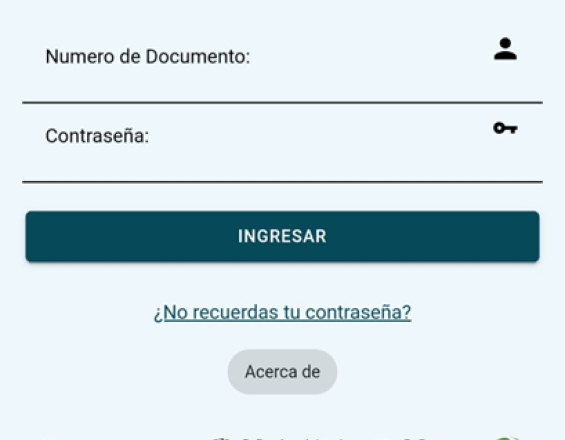
The MiPez application developed by TNC in 2018, is a citizen science tool, which allows fishermen in the Magdalena basin to record their fishing activities. It collects information on sites, species, quantities, costs and materials. It can be used without Internet access. Once the task is finished, fishermen can indicate their catches through a photo gallery of species uploaded to the application.
As fishermen upload information into MiPez, the application consolidates a database with socio-environmental indicators such as species caught, fishing times and relevant sites. This data is crucial for determining the health of the watershed and identifying which areas are experiencing declining fish populations. In addition, the information is useful for local authorities and associations to prevent overfishing and integrate data from dependent communities into a broader analysis of watershed development.
Context
Challenges addressed
1. Keep the application current and with technical support.
2. Train fishermen with little or no schooling.
3. Use of smart cell phones by fishermen
Location
Process
Summary of the process
Despite the deep connection between the river, society and the economy, historically management decisions for resources such as water and rivers have been sectoral. This has led to the loss of species richness in fauna and flora, a key indicator of how healthy the watershed is.
This is why MIPEZ has become a tool that not only allows systematizing fishing activities, but also provides fishermen with a citizen science tool to contribute with their knowledge and information to the management of the basin and to highlight the role of fishing activity as an important part of the economy. For the Authority, it is a tool that offers indicators and fishing statistics, which will contribute to more informed decisions about the resource and for TNC a contribution to science and knowledge of the basin's fish species and their status. This combination of citizen science, scientific knowledge, environmental authority and information management is a successful combination that can significantly contribute to improving ecological and social conditions in the Magdalena Basin.
Building Blocks
Mobile application
The general structure of the application can be replicated in other watersheds, under different social and ecological contexts. It is only necessary to upload the information of the fish species in the basin.
Enabling factors
- User-friendly design for use by people with low educational backgrounds
- Content reviewed and tested with local fishermen, environmental authorities and scientists
- Dashboard, showing aggregated information and indicators of fishing activity
- Does not require a permanent internet connection or high-end equipment.
Lesson learned
- The use of smart cell phones is not widely distributed in fishing communities.
- It is essential to conduct face-to-face training and field tests with fishermen to improve the use of the application.
Resources
MIPEZ indicators portal
The SIMA page (decision support system for the Magdalena Macrobasin) presents statistics that compile data from fishermen. This page shows aggregate data on fishing operations, by different types of indicators: species fished, costs, gear used, fishing areas, among others.
Enabling factors
- Dasboard provides access to aggregated statistics of the information entered in the application.
- It offers information for decision making to authorities and fishermen's associations.
- It can present information segmented by department, municipality, association or fishermen.
Lesson learned
- It is essential to have permanent resources for the administration and maintenance of the platform.
Resources
Partnership with the National Fisheries Authority
In the process of developing the application, The Nature Conservancy and the National Fisheries Authority (AUNAP), signed an agreement of understanding with the objective of making joint efforts to share, generate information and knowledge and identify issues of mutual interest about the country's fisheries resources.
Under this agreement, the organizations have developed and improved the MIPEZ application. Among the activities developed is the registration in the APP of more than 6,000 fishermen linked to the authority; the socialization and training of more than 50 fishery promoters who serve as replicators to train other fishermen.
This agreement is an important milestone for the Authority, the fishermen of the basin and the Conservancy. It contributes to the management of the macrobasin's fisheries, since it provides the authority with a science-based tool, fed by fishermen, with consolidated information to improve decision-making processes in the management of fishery resources.
Enabling factors
- A working agreement between the authorities, NGOs and communities makes it possible to generate collective benefits and effective management guidelines for the resource.
- Involves fishermen, who are normally invisible, in the management of the resource and in basin decisions.
- Allows the Conservancy to contribute scientific information to the management of the fishery resource in the macro-basin and to develop applied research.
Lesson learned
- The administrative and contractual processes of public organizations take longer than other institutions.
- Multi-stakeholder alliances are fundamental tools for the development of effective processes in the territory.
- The participation of local communities and local fishermen's organizations is essential to generate policies and guidelines for resource management.
Impacts
The application allows:
1. Integrate fishermen in the decision making process for the management of the fishing resource; 2.
2. To have accurate and real-time statistics of the activity, with data on costs, important areas and species.
3. The information gathered will allow authorities to make informed decisions on closed fishing activities, conservation and management of strategic areas and economic dynamics of fishing.
4. Fishing communities will have information on their daily activities and will be able to connect with other users to exchange information and knowledge.
5. The importance of the fishing activity in the management of the basin and the fishermen as central actors of the territory is revealed.
Beneficiaries
1. Fishermen of the Magdalena basin.
2. Fishermen's associations
3. National Fishing Authority (AUNAP)
4. Regional environmental authorities
5. Academia and research centers, researchers
6. Ministries of Agriculture and Environment
Sustainable Development Goals
Story
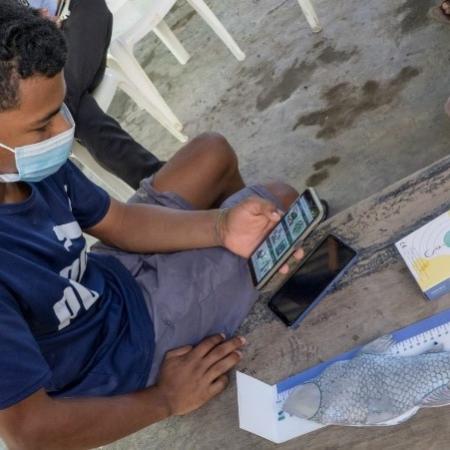
I am Luis Moreno, biologist, native of the municipality of Chimichagua-Cesar, which is settled on the shores of the DRMI and Ramsar Site Ciénaga de Zapatosa, where artisanal fishing represents one of the main economic sources of the region.Currently I support the Participatory Fisheries Monitoring that is carried out with the APP MiPez, as a strategy that was proposed to be the same fishermen and locals who generate information from the record of their work, so that this information leads them to make their own decisions regarding the fishery resource.
My tasks include training fishermen in the use of the PPP, field visits to explain the collection of biological fishing information, socialization with the communities of the results obtained and support in the region for the solution to the difficulties that arise in the course of the collection of information with the application.
When the fishermen are explained the importance of collecting fisheries biological information, and that they can contribute to the generation of credible science and make their fishing activity visible as an important economic activity for the country, and also help them to have inputs to make their own decisions regarding the management of fisheries resources, the empowerment of the fishing communities and the desire to work for their guild is perceived.
In addition, when they realize that the PPP allows them to keep a kind of inventory, where they keep a record of their daily activity, and allows them to know how their sales, expenses, consumption, fishing routes, the most frequented fishing grounds, the most fished species, etc., they see that the tool helps them to organize their daily work.
Monitoring activities are opportunities to create participatory processes that involve communities in research and, later, in the design of strategies for managing fishery resources.
This process has proven to be a training opportunity to involve fishermen in learning more about the biology of the species they harvest. It also provides a platform to discuss fishing activities, the impact that fishing equipment and techniques can have on the species caught, and how to modify these practices to improve catches and minimize negative impacts.
